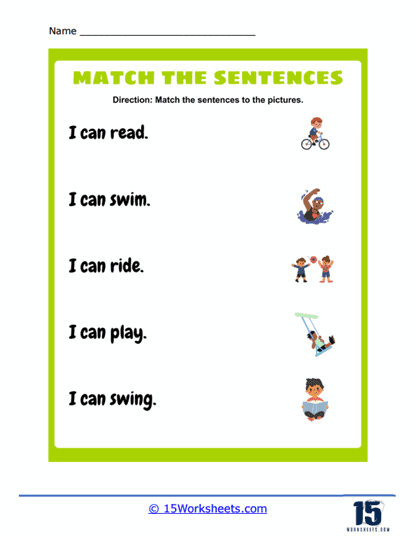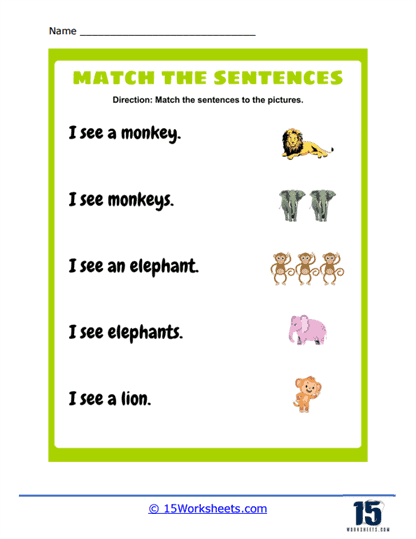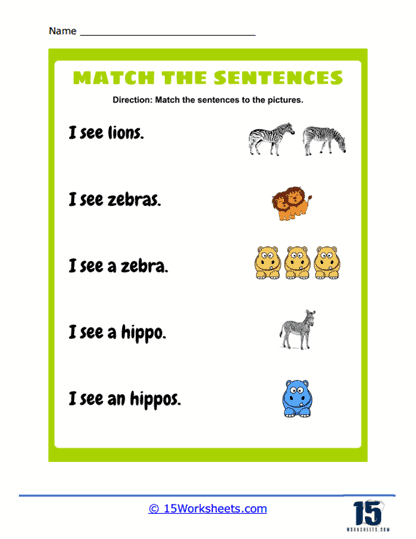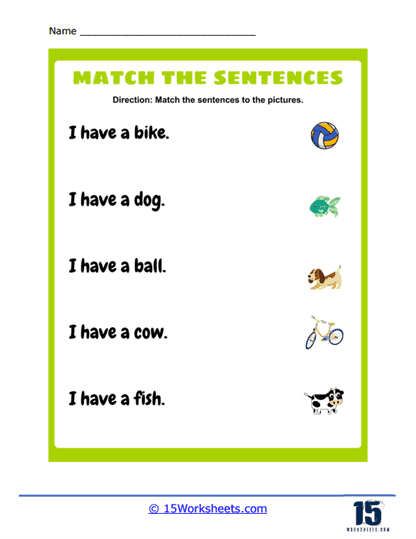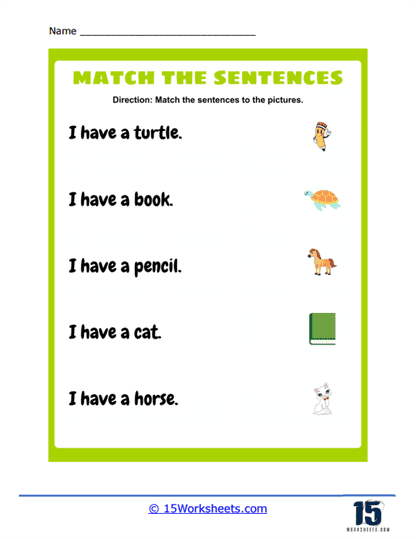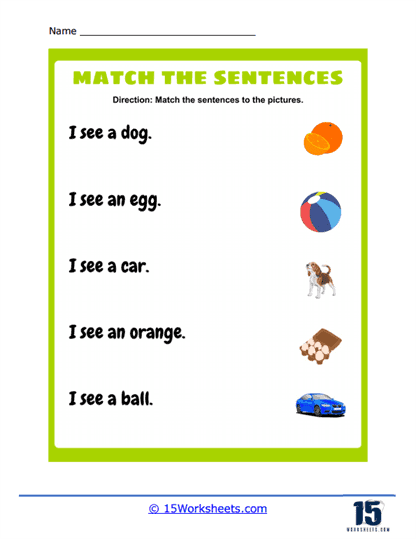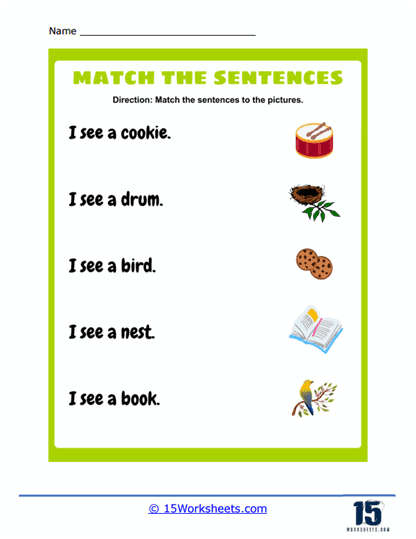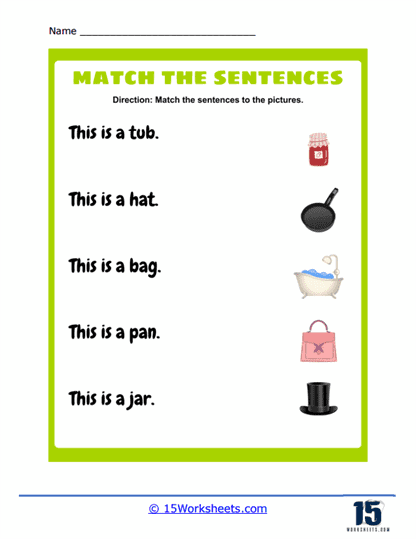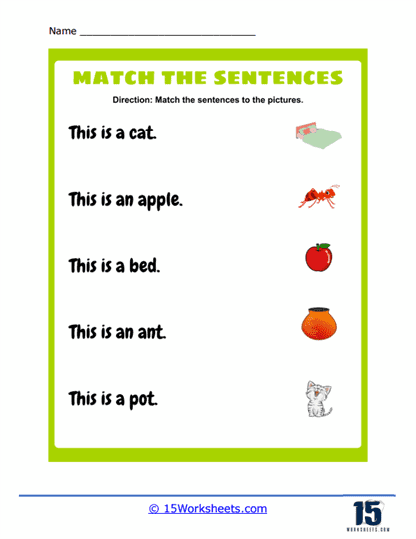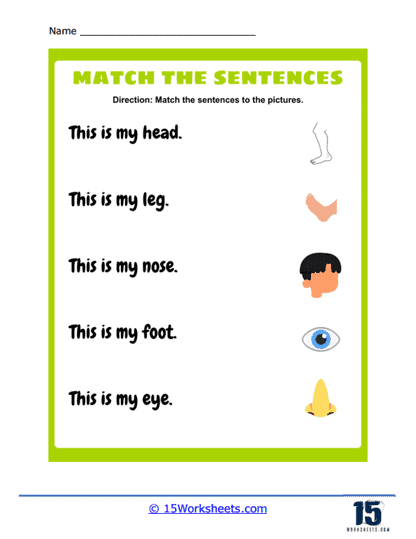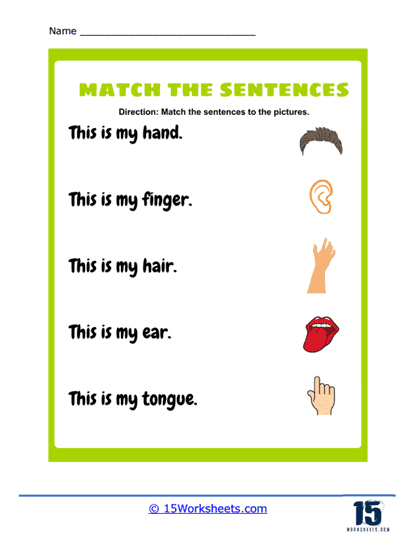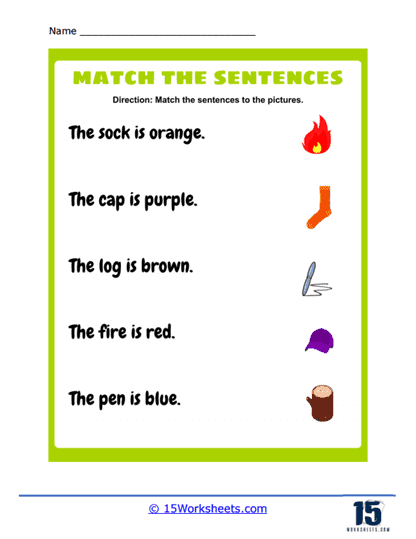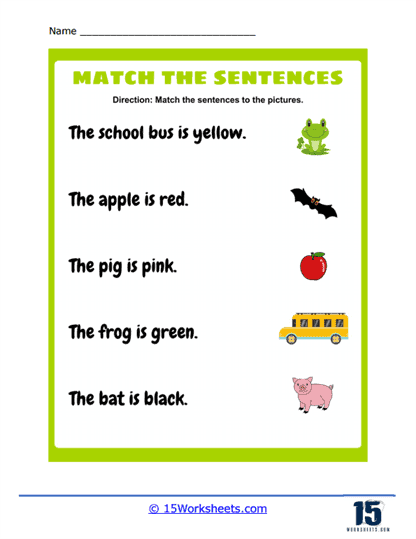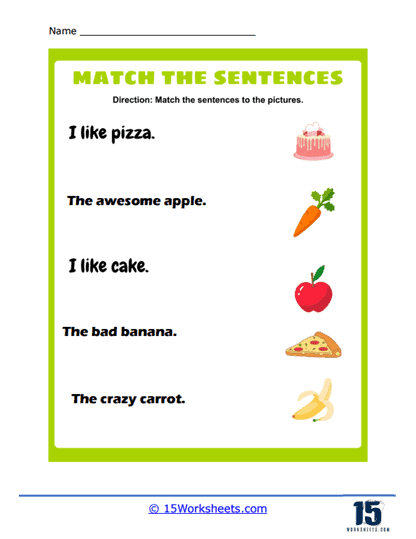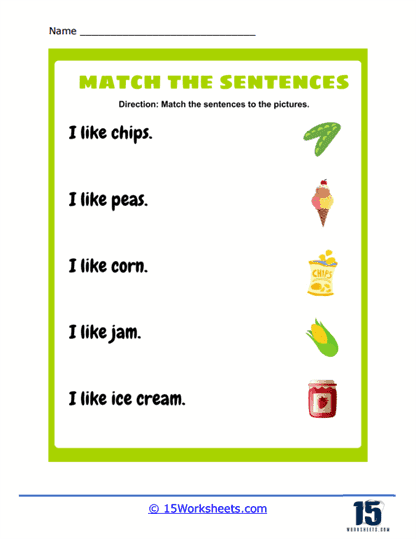Match the Sentences Worksheets
All About These 15 Worksheets
Preschool is a pivotal stage in a child’s development, marked by significant growth in language and communication skills. Engaging activities that support language development and introduce early literacy concepts are crucial for laying a strong foundation for future academic success.
This collection of Match the Sentences worksheets for preschool students provides a valuable resource for educators and parents to engage children in language-building experiences while introducing fundamental reading and comprehension skills. These worksheets offer an interactive and playful approach to learning that not only enhances language skills but also promotes critical thinking and problem-solving.
What Are Match The Sentences Worksheet?
Match the Sentences worksheets were developed to help children improve and practice their reading comprehension, critical thinking, and language skills. These worksheets will present children with a set of sentences or phrases and a corresponding set of pictures, descriptions, or other related content. The goal is for children to match the sentences with the correct related item by analyzing and understanding the content of each sentence.
Some common elements of Match the Sentences worksheets may include:
Sentences with Pictures – Children read a sentence and then match it with the correct image that accurately represents the content of the sentence.
Sentences with Descriptions – Worksheets may require children to match sentences with corresponding descriptions or definitions, helping them to understand and analyze the content more effectively.
Cause and Effect – Children may be asked to match sentences that describe a cause with those that describe the corresponding effect, reinforcing their understanding of cause-and-effect relationships.
Sentences in a Story or Sequence – Worksheets can present sentences from a story or a sequence of events that are out of order. Children need to match the sentences with the correct order or context.
Matching Sentences with Synonyms or Antonyms – Children can practice their language skills by matching sentences that contain synonyms or antonyms of specific words.
Matching Questions with Answers – Worksheets may include a list of questions and a list of answers, with children tasked to match each question with the correct answer.
These worksheets can be used in various settings, such as classrooms, therapy sessions, or at home, and can be adapted to suit different age groups and developmental levels. These worksheets help children develop their reading comprehension, critical thinking, and language skills by encouraging them to analyze and understand the content of the sentences they read.
What Skills Do These Worksheets Enhance?
The skill of matching a sentence to a picture, or understanding the relationship between text and visual information, matters for several reasons:
- Enhances reading comprehension: Matching text to visuals helps readers better understand and interpret the meaning of written content. This skill is especially important for young learners who are developing their reading abilities or those learning a new language.
- Improves visual literacy: Visual literacy is the ability to interpret, negotiate, and make meaning from information presented in the form of images. Matching a sentence to a picture helps develop this skill, enabling individuals to better understand and communicate through visuals.
- Develops critical thinking: Analyzing text and visual information requires critical thinking skills, such as comparing, contrasting, and drawing conclusions. These skills are essential for problem-solving and decision-making in various aspects of life.
- Supports communication: Effective communication often involves the use of both text and visuals. The ability to understand and convey meaning through the combination of text and images is crucial in professional settings, such as presentations, marketing materials, or instructional design.
- Enhances memory and recall: Combining text and visual information can improve memory and recall, as it engages multiple senses and creates a stronger cognitive connection to the material. This can be especially beneficial for learners who have a visual learning style.
- Encourages creativity: Matching sentences to pictures can stimulate creativity, as individuals must think imaginatively and consider various perspectives to find the best visual representation for a given text.
- Fosters empathy and cultural understanding: Visuals can convey emotions, social cues, and cultural context that may not be evident in the text alone. Developing the skill to match sentences to pictures can help individuals better understand and empathize with diverse perspectives and experiences.
Overall, the skill of matching a sentence to a picture is valuable for enhancing reading comprehension, visual literacy, critical thinking, and communication. It also supports memory, creativity, empathy, and cultural understanding, making it an essential skill in education, professional settings, and everyday life.
How to Match a Sentence to a Picture
Matching a sentence to a picture is an exercise that helps improve reading comprehension, visual literacy, and critical thinking skills. To match a sentence to a picture, follow these steps:
- Read the sentence carefully: Read the sentence thoroughly to understand its meaning, paying attention to the subject, verb, and any descriptive words. Make a mental note of the key elements and actions described in the sentence.
- Observe the picture: Take a good look at the picture, paying attention to the details such as objects, people, animals, colors, and background. Analyze the relationships between these elements and any actions happening in the image.
- Identify key elements: Identify the key elements in the picture that correspond to the key elements in the sentence. For example, if the sentence mentions a dog running in a park, look for an image that shows a dog, a park, and the action of running.
- Consider the context: Take into account the context of the sentence and the picture. If the sentence describes a specific emotion, situation, or time of day, make sure the picture reflects that as well.
- Compare and contrast: If there are multiple pictures to choose from, compare and contrast the images based on the key elements and context. Eliminate the pictures that do not match the sentence until you find the one that best represents the sentence.
- Double-check: Once you have found a picture that seems to match the sentence, read the sentence again and look at the picture to ensure they correspond accurately. Check that all key elements and actions are represented in the image.
By following these steps, you can effectively match a sentence to a picture, enhancing your ability to understand the relationship between text and visual information. This skill is important for reading comprehension, communication, and critical thinking in various educational and professional contexts.

